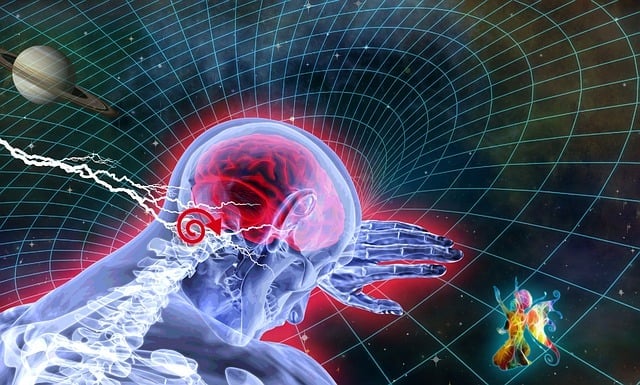Immersing in virtual reality (VR) nature scenes helped relieve symptoms that are often seen in people living with long-term pain, with those who felt more present experiencing the strongest effects.
A new study led by the University of Exeter, published in the journal Pain, tested the impact of immersive 360-degree nature films delivered using VR compared with 2D video images in reducing experience of pain, finding VR almost twice as effective.
Long-term (chronic) pain typically lasts more than three months and is particularly difficult to treat. The researchers simulated this type of pain in healthy participants, finding that nature VR had an effect similar to that of painkillers, which endured for at least five minutes after the VR experience had ended.
Dr Sam Hughes, Senior Lecturer in Pain Neuroscience at the University of Exeter, led the study. He said: "We've seen a growing body of evidence show that exposure to nature can help reduce short term, everyday pain, but there has been less research into how this might work for people living with chronic or longer-term pain. Also, not everyone is able to get out for walks in nature, particularly those living with long term health conditions like chronic pain. Our study is the first to look at the effect of prolonged exposure to a virtual reality nature scene on symptoms seen during long term pain sensitivity. Our results suggest that immersive nature experiences can reduce the development of this pain sensitivity through an enhanced sense of presence and through harnessing the brains in-built pain suppression systems''
The study, which was funded by the Academy of Medical Sciences, involved 29 healthy participants who were shown two types of nature scene after having pain delivered on the forearm using electric shocks. On the first visit, they measured the changes in pain that occur over a 50-minute period following the electric shocks and showed how the healthy participants developed sensitivity to sharp pricking stimuli in the absence of any nature scenes. The results showed that the participants developed a type of sensitivity that closely resembles that seen in people living with nerve pain - which occurs due to changes in how pain signals are processed in the brain and spinal cord.
On the second visit, they immersed the same participants in a 45-minute virtual reality 360-degree experience of the waterfalls of Oregon to see how this could change how the development of pain sensitivity. The scene was specially chosen to maximise therapeutic effects.
In the second visit, they explored the same scene, but on a 2D screen.
They completed questionnaires on their experience of pain after watching the scenes in each case, and also on how present they felt in each experience, and to what extent they felt the nature scenes to be restorative [LV1] .
On a separate visit, participants underwent MRI brain scans at the University of Exeter's Mireille Gillings Neuroimaging Centre. Researchers administered a cold gel to illicit a type of ongoing pain and then scanned participants to study how their brains respond.
The researchers found that the immersive VR experience significantly reduced the development and spread of feelings of pain sensitivity to pricking stimuli, and these pain-reducing effects were still there even at the end of the 45-minute experience.
The more present the person felt during the VR experience, the stronger this pain-relieving effect. The fMRI brain scans also revealed that people with stronger connectivity in brain regions involved in modulating pain responses experienced less pain. The results suggest that nature scenes delivered using VR can help to change how pain signals are transmitted in the brain and spinal cord during long-term pain conditions.
Dr Sonia Medina, of the University of Exeter Medical School and one of the authors on the study, said: "We think VR has a particularly strong effect on reducing experience of pain because it's so immersive. It really created that feeling of being present in nature – and we found the pain -reducing effect was greatest in people for whom that perception was strongest. We hope our study leads to more research to investigate further how exposure to nature effects our pain responses, so we could one day see nature scenes incorporated into ways of reducing pain for people in settings like care homes or hospitals."
The paper is titled 'Immersion in nature through virtual reality attenuates the development and spread of mechanical secondary hyperalgesia: a role for insulo-thalamic effective connectivity' and is published in the journal Pain.






